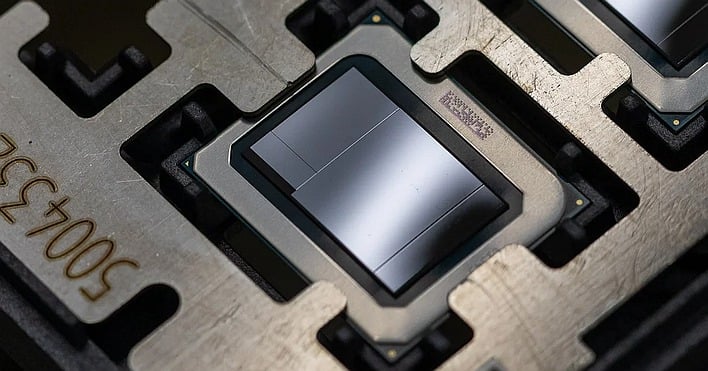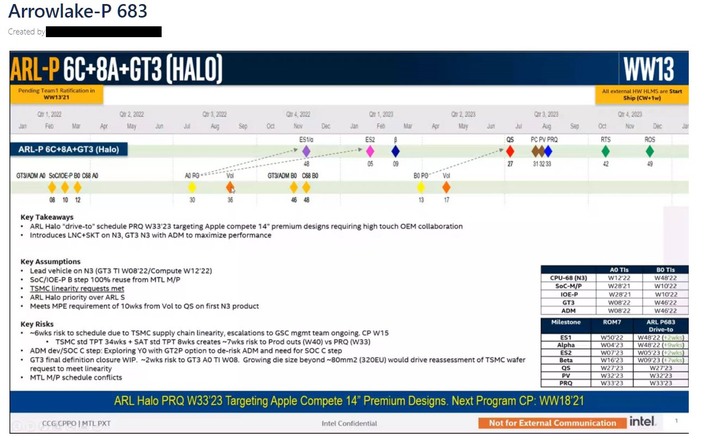Intel Arrow Lake-P Mobile CPU With 320 Execution Unit GPU Tipped In Leaked Slide

Speaking as hardware nerds ourselves, if there's one thing that hardware nerds love to do, it's speculate on upcoming products. Around these parts, we're pretty pleased with Intel's 12th-Gen Alder Lake processors, but even still, we've done a lot of deliberating on Intel's future chips.
Reportedly, we could see 13th-Gen "Raptor Lake" parts just a bit later this year, and according to Intel's presentation at its 2022 Investor Meeting, Meteor Lake won't be too far behind next year. Today's news concerns the generation after that, though, known as "Arrow Lake." Arrow Lake is rumored to be even more mobile-optimized in general, and this news lines up with that idea.
Well-known and occasionally-controversial leaker AdoredTV shared a confidential Intel slide today that he claims to have had for "8-9 months." It pertains, as you've probably presumed, to Arrow Lake, specifically "ARL-P", or the high-end mobile version of that family. Much of the slide is cryptic internal terminology referring to timelines and goal dates for the various milestones related to production of ARL-Pl, but even still, the information on the slide is interesting—Arrow Lake apparently is (or perhaps was) intended to release in Q4 2023.
Arguably, the context in which this YouTube journalist released the slide, is the more interesting part of this story. A few Twitter users were having a discussion about the idea that Arrow Lake will have one or more of its tiles manufactured by TSMC, rather than by Intel itself. The way the information is presented in Intel's slides from the aforementioned Investor Meeting, it certainly seems like that could be the case, and Intel has said that it would consider such a thing before.
One user mentioned that AdoredTV had previously leaked the existence of Arrow Lake-P based on this slide, and that he expects both the CPU and GPU tiles of ARL-P to be manufactured by TSMC. Another user replied that he found the GPU core count of 320 EUs to be incorrect, expecting 384 EUs. That prompted Mr. AdoredTV himself to respond, releasing the slide to the public. Indeed, it clearly states that if the GPU goes any bigger than 320 EUs, Intel will have to reassess its order with TSMC—a business consequence the company would clearly prefer to avoid.
We heard in the past, even before Alder Lake actually launched, that Meteor Lake, the first "disaggregated" (read: tiled) chips from Intel, will come with a massive 192-EU integrated GPU on the top-end. That's probably the "discrete-class" graphics that Koduri was talking about. If the information on this slide from AdoredTV holds true, then Arrow Lake is going to grow the GPU by some 60% again.
Of course, that all depends on a whole pile of other factors, so we'd caution anyone from building up too many expectations based on this single data point. It's still fascinating to imagine where we might be a couple of years from now. As we speculated upon hearing that Meteor Lake (Arrow Lake's predecessor, recall) will have "discrete-class" integrated graphics, the tiled nature of these chips makes it especially likely that we'll see some form of on-package cache, meaning the need for discrete GPUs among casual gamers could be almost completely eliminated.


